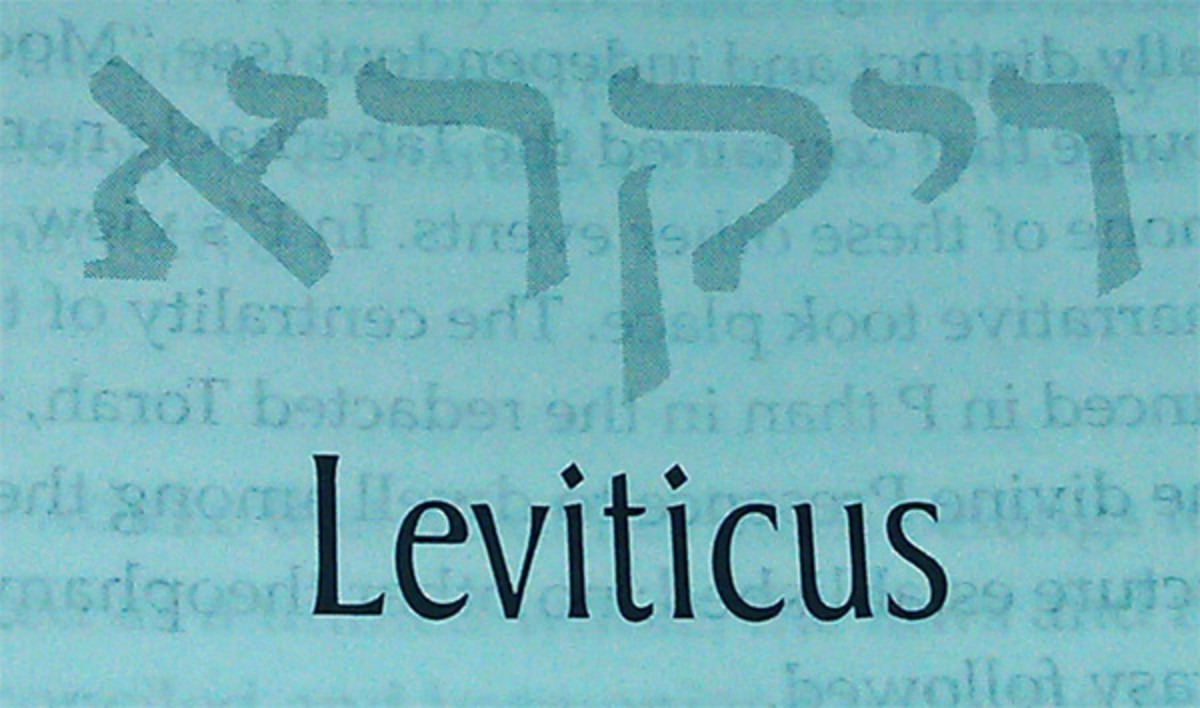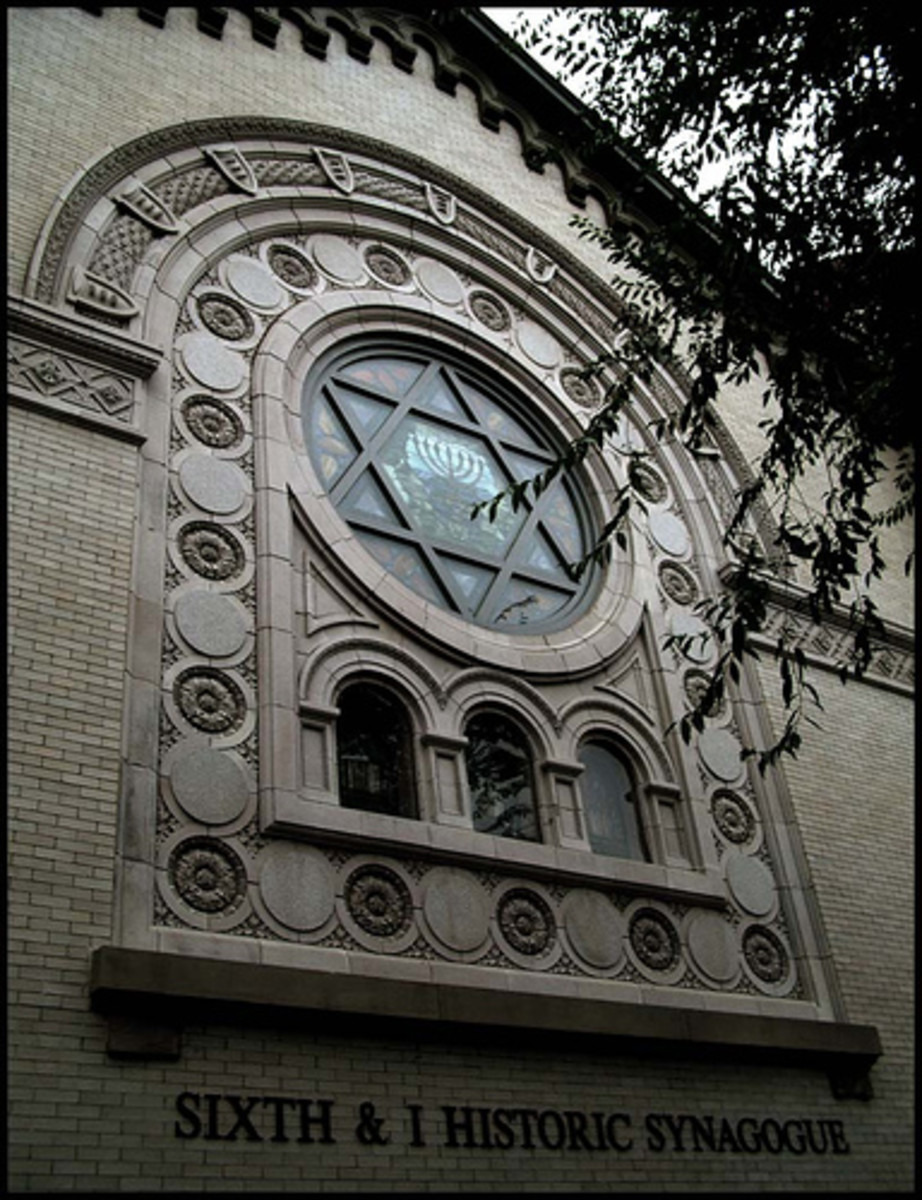Where did The HOLY BIBLE originate from ? (Part I)

A traditional "Sefer" TORAH Scroll
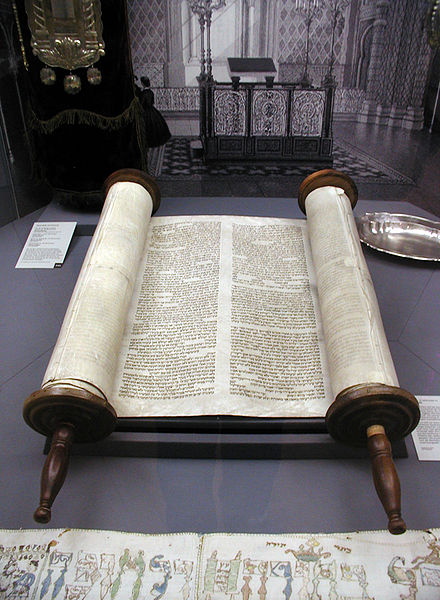
This article was originally just an auto-generated HubPage as a result of a response to another member's question (SEE SideBar Topic Question), which now is going to be explained through this article in more full detail. Since we are talking about The BIBLE (The "Living Word" of God) I thought it would be likewise reasonable to point out how this is another fine example of how God's words do in fact "come alive" and speak to us, which is the reason I felt the "need" to elaborate on this particular topic. So, the Holy Spirit has put the pen back in my hand, cleared my thoughts, and put me to work once again! It's all about HIM! -AMEN
Now the original question was (SEE SideBar):
"Did they teach from just the Torah in Jesus' time or from the Old Testament as we know it?"
There have been a lot of good answers and responses to the question and I think it has already been answered well enough, but for the same token that "moved me" to click that button and originally auto-generate this HubPage, is also compelling me to now go into much more depth and detail about this whole topic and do it the great honor that it deserves. I also had to go back to my own notes and research for better clarification in this article because that needed to be refreshed as well.
This article will now also take on a much different spin than merely answering the original question but I hope that it will be both interesting and thought provoking for all of you reading and provide many other answers as well.
The "Language of God" - The "WORD of GOD"
"In the beginning was the Word, and the Word was with God, and the Word was God. He was with God in the beginning. Through him all things were made; without him nothing was made that has been made. In him was life, and that life was the light of men. The light shines in the darkness, but the darkness has not understood it." (John 1:1-5 NIV)
We are meant to understand that The Holy Bible IS the actual "Word of God", divinely inspired and written by the Holy Spirit through man. To see this (without just sheer Faith alone) we must then look at the Bible in its complete context historically and spiritually for what it truly is.
The Holy Scriptures were for the longest time, not a text but the "story" of the history of the Jewish people, from the time of creation until the time that the script of the "Bible" was actually first written down. It is the original oral traditions of the Hebrew people, passed down from generation to generation, resulting in their learned customs and spiritual practices.
Probably one of the most important things to realize about the Holy Scriptures is the fact that they are the written "Word of God". God has spoken to us from the beginning. The language of the ancient Hebrew people can therefore be understood as being the actual "language of God", as they learned it from the spoken "Word" of the Lord before there was any written language. In fact, originally there was only one common language in the world.
At one point, the Lord found fault in mankind because they were advancing to rapidly in many areas of their learning and were becoming corrupted by this knowledge. So the Lord decided to "confuse" their language ("Tower of Babel" - Genesis 11:1-9) and scatter mankind all across the world. This made it very difficult to communicate ideas and spread knowledge between the respective cultures that emerged (henceforth slowing mankind's development). The lineage of the Hebrew people however, would have kept the original language that they had learned from the Lord God by default (being His chosen people).
This would later became their written language and so forth. Therefore, the written Hebrew language in the Holy Scriptures, are actually the "Words" or "language of God". It is very unique in its purpose and meaning as a result. You should now be able to see its significance, especially in regard to the Holy Bible, as the inspired written "Word of God".
The oral tradition of the Hebrews then, was the record of their genealogy, their cultural practices, the spiritual belief system for their people, and a listing of any significant historical events that they had ever been directly involved with. Unfortunately, being mere humans and having fallen from grace at the very beginning, the Jewish people had a blemished history of both finding favor with God and then falling out of it again when they had displeased him.
"Thou hast forsaken me, saith the LORD, thou art gone backward: therefore will I stretch out my hand against thee, and destroy thee; I am weary with repenting."
(Jeremiah 15:6 KJV)
At the point in history above, Babylon had become a great nation under King Nebuchadnezzar II. The Jewish people had become caught up in a war between between Babylon and Egypt, and because of their most recent lack of regard for the Lord's will, they were going to be punished as the Prophet Jeremiah had been trying to warn them.
Nebuchadnezzar came in and defeated the Egyptian forces in Judea, then conquered the Kingdom of Judah itself and at the capital city of Jerusalem he was responsible for the destruction of King Solomon's Temple (the First Temple). The Babylonians sent the Jews into exile (over a period of time between 597-582 BCE) leaving Jerusalem devastated and practically empty. The Babylonians then ruled over the Jews as captives for basically the next 40 some years.
It was during this time that the original written "Bible" was first drafted. Although the Jews were in exile, this period was a rich one for Hebrew literature and a time for them to return to the ways of the Lord. In order to preserve the oral traditions of the former temple priesthood and for their Jewish heritage not to become lost, the Rabbi (religious teachers) began to write down everything they could about the word of God and their ethnic history back to the time of creation at the "Garden east of Eden" through to the times of Noah and his bloodline after the great flood (Antedeluvian history).
These writings are what would become the foundations for all Jewish Rabbinic literature and included:
The TORAH: (also known as the Pentateuch) or the Five Books of Moses and basic "teachings" of the faith (Genesis, Exodus, Leviticus, Numbers, and Deuteronomy), as well as the entirety of Judaism's fundamental legal and ethical religious texts, with allegory, historical narrative, poetry, genealogy, and the exposition of various types of law. The Torah also contains the 613 "Mitzvot" which were additional "commandments" (beyond that of the "10" main ones given to Moses at Mt. Sinai), which are divided into 365 restrictions and 248 positive commands. The "Mizvot" are part of the Hebrew Bible today but are not part of the Christian text which is predominantly just the Christian cannon (scripture) of the Old and New Testaments combined.
-------------------------------------------------------------------------------------------------------
"Sefer Torah" or TORAH Scroll

The Torah is considered the authentic revealed message of YHWH (YaHWeH - or as "Jehovah", based on the Latin form of the term) to the Jewish people, and the same as the G-d of Moses (“I AM”) who gave the original Ten Commandements, and the G-d of the covenant with Abraham and Jacob (Israel) by the early Israelites, which considered the Torah at the time of its actual writing to be factual history, as had been conveyed by Moses who started the oral tradition with the people. We can also see through scripture in the Books of Moses where each new generation was required to learn and memorize this history and law as it was recited, and then passed on to the next.
The traditions of the Hebrew people have the utmost respect for G-d and out of respect for the name (YHWH) and the interpretation of the commandment “not to take the name of God in vain”, they will typically not even use the word. Instead the Hebrew word "Adonai" ("Lord") may be substituted or other terms such as “HaShem” ("The Name") or the word “Ado-Shem”, but generally only when they are in prayer and out of fear for the potential misuse of the actual divine name.
In English translations, it is often rendered in capital letters as "the LORD", following the Jewish tradition for "Adonai", and for the Jews as written in English, "G-d" is also used as a substitute by some for these same reasons. I likewise hold the view of the very careful use of our LORD’s name and by no means imply any disrespect or anything the less by spelling or using these names in one way or another, especially as used in these literary texts for educational purposes.
A "Sefer Torah" (the "book of Torah") or Torah scroll (shown in the accompanying photos) is a copy of the Torah written on parchment in a formal, traditional, and prayerful manner, by a specially trained scribe under very strict requirements. These are used today in modern synagogues (Jewish Temples) and are not museum pieces or mere reproductions.
--------------------------------------------------------------------------------------------------------------------------------
The HOLY BIBLE

Understanding the Significance and the Origin of the HOLY BIBLE
Now once again and not to get confused on clarifying the subject, the “Hebrew Bible” of the correct and traditional sense is a set of many books and religious script that make up the entire volume of the Jewish faith. This should not be confused with the Chistian Bible as we know it (Old and New Testaments) which is a single book containing the volumes and verses of many other smaller books. The phrase “Hebrew Bible” is commonly used and referred to by Christians as describing basically the “Old Testament” which is the main and common element in both, but it is not in fact the correct use of the terminology.
The Torah is of course just the first part of the Hebrew Bible which includes the Five Books of Moses and the Mitzvot. The word "Torah" in Hebrew actually translates as "teaching", "doctrine", or "instruction", although the Torah is more commonly referred to as "the law". The term "Torah" is therefore also used in the general sense to include both Judaism's written law and oral law, which covers the entire spectrum of the Jewish religious authoritative teachings throughout history, but this likewise extends into the other Rabinnic texts as well.
Regardless of whether or not we are talking about the “Hebrew Bible” versus the “Christian Bible”, I would like to bring up some very important facts to realize. It should be understood that the Bible (the Word of God) as we know it, has an even greater history and embedded depth of spiritual meaning than what we "see" on the surface. This is why the Bible is known as the "LIVING" Word of God, because of the ability for its words to "come alive" and speak to us on a much higher level and greater depth of understanding than just merely words on paper.
The Rabbinic teachers of Judaism have long studied scripture for both its literal and spiritual meaning because in their own Hebrew language, each word or character actually has several "layers" of definition. Some words in Hebrew are even formed by taking the first character of several other words to form that new word. Their language is unique in this aspect and some Hebrew words just do not translate well at all for they are more concept than just a single word. So in order to fully understand the scriptures, we must also better understand the language it was originally written in, and then how it was translated (or mis-translated).
"The direct meaning of Hebrew words are also based on something tangible or what can be understood through your five senses. For example the statement 'In God's loving care' would be translated into Hebrew as 'In God's bosom'. For the reverse this becomes a bit more difficult because the Greek words (and then the Latin) are based more on intangible or abstract ideas."
(SEE Deborah Sexton's Hub on Hebrew Words and their meaning)
The best example I can think of here is in the use of the word "image" as taken from: "So God created man in his own image.." (Genesis 1:27 KJV). The word for image here is "tselem", which does not mean that we actually "look like" or resemble God (and since God, being of a spiritual nature is not material except through Christ), but that we are actually a "representation" of Him or better yet, an inward facsimile of His divine nature and being. God is a “triune” being (the “Holy Trinity”) existing as three persons (God the Father--God the Son-Jesus Christ--God the Holy Spirit), but all collectively together as one being with SOUL-BODY-SPIRIT. This is how we are created in His “image” for we (mankind) are “triune” beings as well, having these same characteristics. This is unlike the Angels (the Celestial beings) who are Soul and Spirit (which although they can assume a material form - it is not an inherent part of their nature) and the rest of the created material life, as this is a unique attribute to mankind and what separates us from all the rest of our Lord’s creation.
Also for instance in the Hebrew language the word PaRDeS, is "park" or "garden" (i.e.; as in the Garden of Eden), which when taken without the vowels (as it is actually spelled) then becomes the acronym or "notarikon" (a Hebrew multi-level acronym) for "PRDS", which is the sum of what we have just been describing, pertaining to the depth of meaning for words in the Hebrew language. Then these four words also describe the four levels of interpretation in Hebrew which are defined as follows:
(P)ashat = "plain" (or "simple"); the direct meaning of a word.
(R)emez = "hint" or "deep" (hidden/symbolic); beyond just the literal meaning.
(D)erash = "inquire" (to "seek"); the comparative ("midrashic") meaning of a word.
(S)od = "secret" (mystery); the mystical meaning of a word, as given through spiritual inspiration and/or revelation.
*(Midrashic in Hebrew meaning the method of delivery for biblical explanation).
Do you see how this can play a significant role in the proper translation and correct understanding of scripture? This is why the "Word of God" (the Bible) is referred to as the "Living Word of God". Because it can have a deliberate and intentional variety of translated meanings. It is because it takes on these new layers and levels of understanding that God can actually "speak" to us by way of His written words and when accompanied by fervent study, meditation and prayer.
Is it no coincidence (not only being the choosen people of God) that it was the hands (and language) of the Hebrew people that were first given the task of writing these things down on the behalf of our Lord God. The Bible is meant not to be a book for a shelf in the library because is it "alive" and to be participated in by the living.
We can now understand that the “Word of God” in the Bible (originally written in Hebrew) likewise has similar depth in meaning and understanding. Sometimes it becomes a labor to find this understanding, especially when the Bible has been translated from the original Hebrew, into the Greek, then Latin, German, and finally English languages, of which there are now many variations (King James, New International, etc.) and so forth. So all of these variants must be looked at in their entirety and with a labor of love to be seeking the truth, wherein the "living word" then begins to reveal itself to us. It is only when we (like the Rabbi) begin to thoroughly study this nature that more things become evident. By prayerfully reading the Word of God the Holy Spirit is able to move into our understanding.
The first fact is that the Bible self-proclaims its own authority unto itself to be the inspired Word of God. It's authors also knew that they were often "ghostwriting" the actual "Words of God" in a prophetic sense, even though they sometimes did not fully understand at that time the underlying context of what it was they were writing in that capacity.
"All scripture is given by inspiration of God, and is profitable for doctrine, for reproof, for correction, for instruction in righteousness:" (2 Timothy 3:16 KJV).
Jesus himself viewed the "Old Testament" scripture with great reverance and as an authoritative work from which He quoted continuously throughout his ministry (which of course takes us back to the ORIGINAL TOPIC QUESTION). Jesus was a Jew, and had grown up and been taught under the traditional sense that all of the Hebrew people during that time would have.
Next is that the Holy Spirit, who convicts our conscience of sin, also reassures the believer and confirms to us that the Bible IS the "Word of God".
"Howbeit when he, the Spirit of truth, is come, he will guide you into all truth: for he shall not speak of himself; but whatsoever he shall hear, that shall he speak: and he will shew you things to come." (John 16:13 KJV)
--------------------------------------------------------------------------------------------------------------------------------
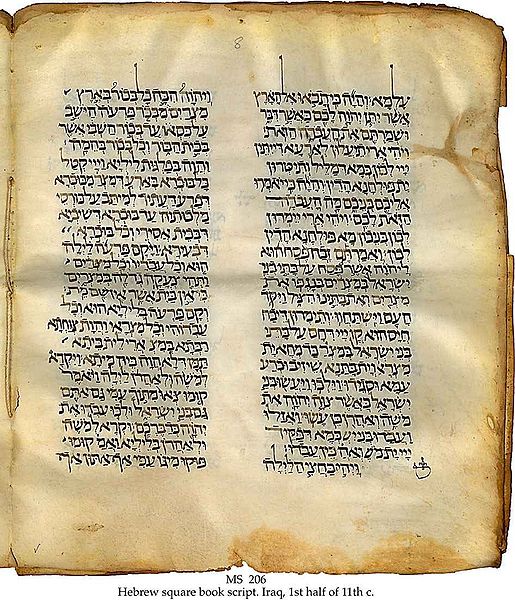
The Other Rabinnic Texts from the Times of Early Scripture
The true "Hebrew Bible" then is the TaNaKh, which is the combination of all these earlier Rabinnic texts. The TaNaKh is the "Masoretic" (authoritative) text and the canon (official scripture) of Judaism in the Hebrew Bible, which included the books of the Torah ("Teachings"), the Nevi'im ("Prophets"), and the Ketuvim ("Writings") - hence Ta-Na-Kh, as taken from each of their names in Hebrew.
The TaNaKh itself was however compiled by the "The Men of the Great Assembly" (450 BCE), also known as the Great Synagogue. According to Jewish tradition, this was an assembly of 120 scribes, sages, and prophets, in the period from the end of the Biblical prophets to the time of the development of Rabbinic Judaism, marking a transition from the era of prophets to the era of Rabbis. This is not however, what would have been used by Jesus or the Rabbis of His time, for as with the "Old Testament" of the Christian Bible, the TaNaKh is a later compilation of these earlier Jewish Rabinnic texts.
It is also important to note that even though the original text for the Bible was recorded during the time of the "Jewish Captivity" by Babylon, that there was still no form of mass production for written works, each having to be created individually by hand. Most of these copies were highly treasured pieces and generally were only found in the hands of the priests. Therefore, the oral tradition was still the most common method of relaying scriptural quotation from one person to the next over the generations.
And beginning at Moses and all the prophets, He [Jesus] expounded unto them in all the scriptures the things concerning himself. (Luke 24:27 KJV)
Jesus however, was simply a master at knowing and understanding the scripture as was evidenced by His visits to the temples and debates with the religious authorities of that time. Everything He taught in His ministry was based from His memory and knowledge of the scripture as it was quoted out of the original texts of the Torah, the Nevi'im, and the Ketuvim.
The TaNaKh
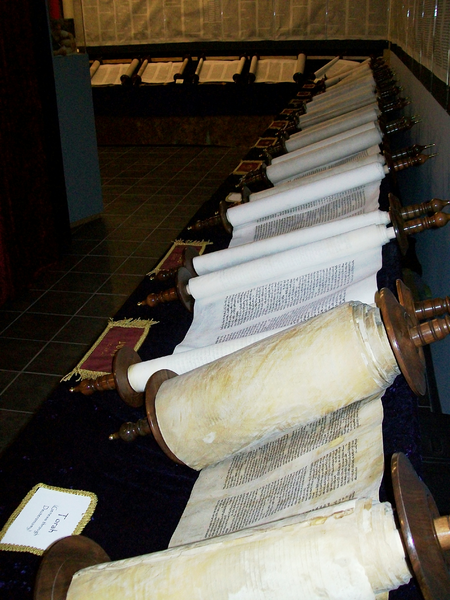
Hebrew Bible
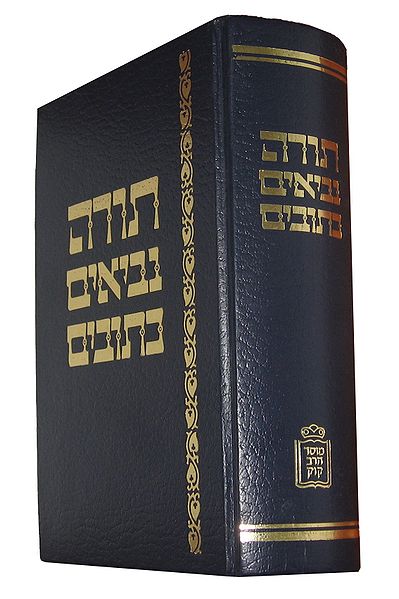
The Nevi'im ("Prophets"), is the second of the three major sections of the Hebrew Bible. It is traditionally divided into two parts:
The "Former Prophets" or Nevi'im Rishonim - which contains the narrative books of Joshua through Kings (also in the "Old Testament" of the Christian Bible).
The "Latter Prophets" or Nevi'im Aharonim - which mostly contains prophecies in the form of biblical poetry.
In the Jewish tradition, the books of Samuel and Kings are each counted as one book. In addition, twelve relatively short prophetic books are counted as one in a single collection called Trei Asar or "The Twelve Minor Prophets". The Nevi'im then counts for a total of seven (7) of the "Old Testament" books in the Christian Bible and eight (8) books out of (24) of the books in the entire TaNaKh. In the Jewish liturgy, selections from the books of Nevi'im known as the Haftarah are read publicly in the synagogue after the reading of the Torah on each Sabbath, as well as on Jewish festivals and fast days.
In the Christian tradition, the prophets are placed in the final section (following the writings) of the Hebrew Bible text, with one exception. The major prophets (the Book of Isaiah, the Book of Jeremiah, and the Book of Ezekiel) are followed by the Book of Daniel due to its prophetic nature, whereas the Book of Daniel is considered part of the writings (Ketuvim) instead of with "the prophets", as found in the TaNaKh. The Roman Catholic Bible also places additions to Daniel here, and the Eastern Orthodox Church includes additions to Daniel, plus (4) Maccabees following the Book of Malachi. The ordering of the twelve minor prophets, however, which is roughly chronological, is the same for all three Christian texts as it is in the Hebrew Bible.
The Ketuvim ("Writings"), is the third volume and final section of the Hebrew Bible (TaNaKh), following in order after the Torah and the Nevi'im. In the modern English translations of the Hebrew Bible, this section is usually entitled "Writings" or "Hagiographa". The Ketuvim are also believed in traditional Judaism to have been written under the influence of Ruach HaKodesh (Divine Spirit or Divine Inspiration = the "Holy Spirit"), but with one level less authority than that of other prophetic Hebrew texts.
From "the Writings" may be found within Hebrew and Christian scriptures, I and II Chronicles forming only one book in the Ketuvim, along with the Books of Ezra and Nehemiah which also form a single volume entitled "Ezra-Nehemiah". Collectively, eleven books in all are included in the Ketuvim to conclude the total (24) books of the Hebrew Bible (the TaNaKh).
--------------------------------------------------------------------------------------------------------------------------------
What did they Teach from in the time of Jesus ("Old Testament") ?
There was not really an "Old Testament" yet in the traditional sense as we know it. The "Old Testament" being actually more what is considered to be the Jewish or Hebrew Bible, which is a term referring to the common and shared portions of the TaNaKh (the Jewish canon) and the Christian canons, which of course were written after Christ's life.
The Rabbinic orders at the time of Jesus more appropriately studied from the existing texts of that time, that were originally written down from the Hebrew oral tradition at the time of the Jewish captivity by Babylon, a few hundred years earlier as described above.
Then He [Jesus] said to them, “These are the words which I spoke to you while I was still with you, that all things must be fulfilled which were written in the Law of Moses and the Prophets and the Psalms concerning Me.” And He opened their understanding, that they might comprehend the Scriptures. (Luke 24:44-45 NKJV)
Of course it was these original texts that "evolved" into the respective Hebrew Bible of today, which also included any other Jewish law that had been ordained in the interim. The Christian Bible likewise was derived from these earlier texts and then was later expanded to included the Gospels, Epistles and other writings of Christ's disciples.
So, in answer to the original question, YES--they did use an "equivalent" to what is known as the "Old Testament", other than it had not yet been written in that format at the time. They did use the TORAH and would have been using an earlier version of the TaNaKh (the "Hebrew Bible") in the forms of the Torah, the Nevi'im, and the Ketuvim, respectively
I hope this has helped to clarify the topic, more so than to confuse it...
There will be an additional article (PART II) of this topic which will further describe the evolution of the Christian HOLY BIBLE as we know it today, which includes both the “Old Testament” and the “New Testament”, and deals more with the life and ministry of our LORD Jesus Christ and the Church of the New Covenant which was the basis and foundation of the Christian faith.
Credits
Thanks as always go to Bible Gateway and Wikipedia that serve as invaluable research tools as well as all the other authors on HubPages of whom I read and likewise draw inspiration. ALL the real credit goes to the GLORY of GOD however, for it is His Holy Spirit that guides and moves me in all things and it is His WORD that I write about to hopefully shed more light onto His coming Kingdom through His son Jesus Christ our Lord and savior. -AMEN
-------------------------------------------------------------------------------------------------------
Useful SCRIPTURE HubPages
-------------------------------------------------------------------------------------------------------


Building for the glory of Christ's coming Kingdom!
Here on the HubPages® of The Faith Network, we arlaying down the framework for an extended internet-based Ministry and outreach. More content will be added on a regular basis... We invite you to check back often and see what is new.
The FAITH NETWORK provides and promotes practical Biblical teaching, dedicated devotional topics, relevant faith-based resources, and powerful spiritual insights on matters of faith and everday moral living practices for individuals, churches, charitable organizations, Christ-based businesses, and other ministry related efforts.
While you are browsing, see how other Christian HubPages® Authors are writing useful information and creating successful Hub websites. Also check out the official Hub Page Community on Christianity-The Bible and Jesus.
Prophecy Reports - http://prophecy.foreverinchrist.org
Ministry Site - http://www.Christ4Ever.org
More information about us here on HubPages: http://hubpages.com/hub/Forever-in-Christ
God bless and see you all soon!








